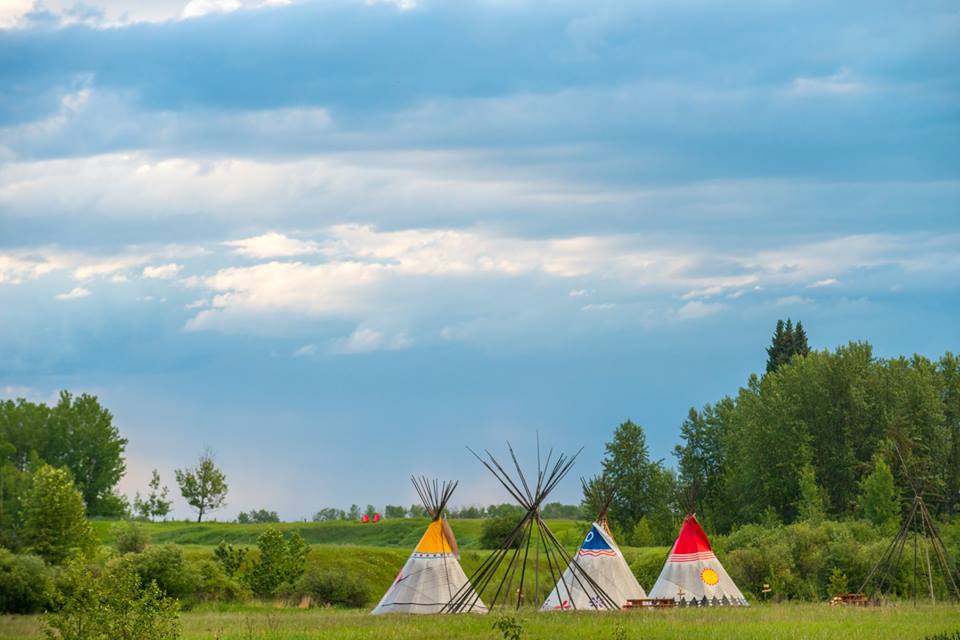
ROCKY MOUNTAIN HOUSE, Alta. — It’s off the beaten path with adventures ranging from viewing burly bison on the plains to hiking the stunning ridge of nearby Coliseum Mountain.
Rocky Mountain House National Historic Site, an archeological site that has remnants of early 19th century fur trading posts, is in the foothills of the Rocky Mountains west of Highway 2 between Calgary and Edmonton.
Each time you visit the rustic area, there’s opportunity for a new experience.
“I really like Rocky,” said Susan Kennard, manager of heritage programs with Parks Canada, which manages the site. “To me, it feels like it’s infused with the community spirit, too. That makes a difference there.”
Four forts once stood on the land at the confluence of the North Saskatchewan and Clearwater rivers.
First Nations, the Metis and European traders used the rivers like highways, transporting their goods to and from the forts — a centre of commerce in the West for decades.
Only remnants of the forts remain, but there are plenty of signs pointing to the significance of the site.
You can explore the Chimney Trail, which goes through the archeological remains of two Hudson’s Bay Company forts from 1835 and 1868, or the David Thompson Trail, which follows the banks of the river.
There are also several heritage programs including First Nation drum and song, as well as bannock-making and dream-catcher workshops.
Marcien LeBlanc, past-president of Metis Local 845, said they actively try to teach people who visit about the history of the place.
“We train the young people to be able to tell people about that,” he said.
LeBlanc said visitors can tour two tents and climb aboard a Red River Cart to imagine what life was once like there.
The programs are run by the Metis, the Confluence Heritage Society or Parks Canada.
“People love the idea of doing a beading workshop or capote making,” said Kennard.
Visitors can also walk up to a lookout and catch glimpses of some of the 12 Plains bison in the paddock.
And make sure to listen for yipping coyotes, watch for deer wandering through the campground and keep an ear out for mooing cows — sometimes all in the same day.
“It’s a hidden gem,” said Kennard.
Our group, which included two children, also found must-do activities in the surrounding area:
– Head down to the shore of the brilliantly blue Abraham Lake. Located along the David Thompson Highway between Saskatchewan River Crossing and Nordegg, it’s a man-made lake and the province’s largest reservoir for drinking water. The lake was created in 1972 with the construction of the Bighorn Dam.
– Hike on trails like Siffleur Falls, a 10-kilometre hike with impressive waterfalls; and, Coliseum Mountain, a 12-kilometre trail with stunning views. The trails are much quieter than those in nearby Banff National Park.
– Tour an old mine site, a collection of buildings and machinery left from coal-mining operations of the Brazeau Collieries in Nordegg.
– Eat pie at the Miners’ Cafe in Nordegg. Try the banana cream and the strawberry rhubarb and the coconut cream. There’s lunch, too, but definitely save room for the pie — or take a full pie home with you.
—
If you go:
What’s new: A Plains bison exhibit will open at the visitor centre this summer, allowing people to watch a video about their reintroduction in nearby Banff National Park. The visitor centre also has a new 3D Virtual Reality Experience, which allows visitors to tour the four fur trading posts — made in a version of the Minecraft video game — with virtual reality goggles.
How to book: Reservations can be made online for the teepees, trapper tents, trapline cabins or camping. The teepees have room for eight people, the trapper’s tents fit three to five people and the trapline cabins sleep up to six. All have comfy mattresses to sleep on, but bring your own sleeping bags and pillows. There’s also 10 walk-in tenting sites and 26 unserviced trailer sites.
How to get there: Rocky Mountain House National Historic Site is located west of Red Deer, Alta. on the eastern slopes of the Rockies. It’s between 200 and 225 kilometres from Calgary or Edmonton, depending on the route you take. There are several scenic options, but the easiest way is taking Highway 2 to Red Deer and driving west to Rocky Mountain House, Alta. The historic site is about a 10-minute drive from town, just off of Highway 11A.